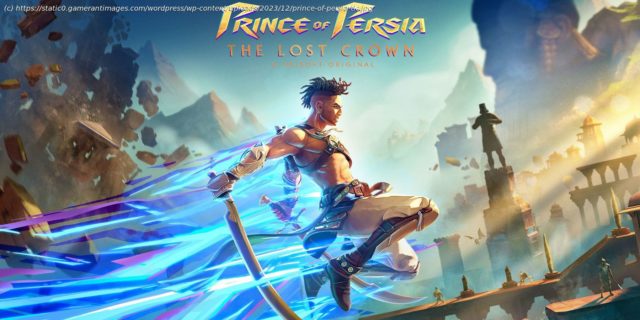Game Rant’s three-and-a-half-hour preview of the upcoming Prince of Persia metroidvania showed fun exploration, tough bosses, and clever puzzles.
Prince of Persia: The Lost Crown is the series’ first mainline entry in almost 14 years, this time forgoing the previous trilogy’s third-person action game approach in favor of a 2.5D metroidvania that harkens back to the series’ roots as a sidescrolling platformer. It’s clear that Prince of Persia: The Lost Crown has been taking notes over the past decade of metroidvania development: many of its systems will be cozily familiar to fans of the genre, while a generous helping of quality-of-life features and customizable difficulty make it one of the most accessible metroidvanias in recent memory. The game promises a length of between 20 and 25 hours, and Game Rant saw a sizeable chunk of content in our three-and-a-half-hour run.
Players take on the role of Sargon, a gifted warrior and one of the seven elite Immortals tasked with rescuing Prince Ghassan who has been kidnapped away to Mount Qaf, the game’s primary setting. Once a wondrous center of knowledge and power, Mount Qaf is now mysteriously cursed and filled to the brim with hordes of undead and other enemies that have seriously thrown a wrench in this rescue operation. Mount Qaf is more interesting in terms of biome diversity than its name may suggest: there are lush wild regions like the Hyrcanian Forest, puzzle-filled labyrinths like the Sacred Archives, and wide-open cityscapes that deliver some exceptional vistas. Prince of Persia: The Lost Crown Looks To Be A Solid Metroidvania
Although it’s part of the Prince of Persia series, The Lost Crown is unmistakably a metroidvania with all the hallmarks of the genre. There’s backtracking to previously unreachable areas with new abilities, punching walls in the hopes of finding secret doors–of which there are many–and carefully navigating some occasionally tough-as-nails platforming gauntlets for some extra goodies. In typical metroidvania fashion, progression is largely driven by unlocking new abilities that aid in either traversal or puzzle-solving in some way, and these usually also help in combat. For example, the boomerang-like chakram is often used to remotely trigger mechanical puzzle elements but is also a handy ranged weapon that can be accurately ricocheted with a helpful angle indicator. Puzzles, combat encounters, and platforming sections tended to do a good job of encouraging us to fully utilize Sargon’s growing arsenal.
The Lost Crown also introduces a major quality-of-life leap for the genre: the Memory Shards system. Rather than simply marking locations on the map, players can include a screenshot of that area as part of the map pin so that they can easily refer back to the particular challenge in that area.






